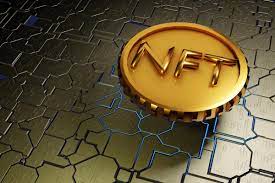What To Know About NFTs – A Guide to the Latest Trend in Blockchain

Have you heard about Beeple selling his digital artwork for US dollar, $69.3 million—a feat that earned him the most expensive NFT sold. Or Jack Dorsey selling his first-ever tweet for $US2.9 million. And you be like what is going on. Let’s quickly run through the whole gist behind NFT.
What is NFT?
NFT, short for the non-fungible token, is a type of crypto token. It is just like Bitcoin because it is also stored on the blockchain. But that’s where the similarity ends. Whereas Bitcoin is fungible, NFT is, well, non-fungible.
You might be confused as to the word fungible, it man it can be replaced or exchanged with another identical object. This feature is common in all fiat and digital currencies. for example, you can easily exchange one bitcoin for another bitcoin without any hassles.
The history of the coin or the identity of the first owner of the coin is irrelevant to you. Your only concern is that it is genuine and it’s in your wallet.
NFTs, on the other hand, are not mutually interchangeable like bitcoin. They are one-of-a-kind digital assets that cannot be replaced by another.
How do NFTs work?
To understand how NFTs work, we first have to look at cryptography. Now don’t get alarmed here, it’s not that complex to understand.
Cryptograph permits two parties to securely communicate without a third party decoding the message. This communication is made possible by the possession of two keys which include: private keys and public keys.
To demonstrate how these key works, let’s take, for instance, you want to message your friend with top-secret info. Using cryptography, you will send the message to your friend’s public key. To a nosy person, this message could as well be in parse tongue because it will look like a random sequence of characters.
Something like: a8hTu04ghVI72aEl%b*s6. Your friend will then have to use their private key to decode your message.
From this example, you can see how cryptography provides authenticity by ensuring that your message gets to its intended recipient and no one else.
NFTs use the authenticity feature of cryptography to differentiate them from other tokens on the blockchain. Just like in the illustration above, when you purchase an NFT, you get a private key that proves that you are the owner of that token. While the public key remains with the person that sold it to you.
It is the creator’s public key that will be proof that you indeed got the original token from them.
So let’s say you want to buy a Banksy’s NFT. After paying for it, Banksy will keep the public key and give you a private key that links to the token. If anyone wants to confirm that you own a digital Banksy, they can easily go on the blockchain and verify from the transaction history.
Do all NFTs use Ethereum?
Not really! Yeah, the first NFTs were transacted only on the Ethereum blockchain. But to the question, it is not correct.
Some NFTs are currently hosted on other blockchain networks like Solana, Tezos, Polkadot, Binance, Tron, and NEO. Still, the vast majority of NFTs are hosted on the Ethereum token standards. Moreover, Ethereum’s ERC-721 token standard is still the most preferred framework for the building and issuance of NFTs.
Read Also: What is Bitcoin? A Simple quick Guide for Beginners
Can I create my NFTs?
Of course, you can. And contrary to what you might think, making your own NFT is not as hard as it sounds. It only requires the following:
- The item you want to mint: This could be an artwork, gif, song, video, game, or any other valuable collectible in your possession.
- Tokens: To pay the blockchain minting fee.
- Crypto wallet: To store the crypto you receive from the transaction.
Once you have certified all the requirements, you are good to go ahead and choose the blockchain technology that will cost your NFT. Whatever your choice, make sure that your preferred blockchain has an active community, fast transaction times, and low fees.
Where can I buy NFT?
peace is the largest NFT marketplace.
Can I own the rights to an NFT?
When you buy an NFT, you are only buying ownership of the asset. The copyright will remain with the content creator. But don’t worry, this copyright does not grant the creator the license to replicate or transfer your NFT without your permission.
What determines the value of NFTs?
You, the seller, Obama, and the partridge in a pear tree
Scarcity is also a major factor here.
Can my NFT be stolen?
We have learned earlier that NFT is stored in the blockchain. We also got to know that data stored in the blockchain can’t be erased or altered. The reason is that,
To alter data on the blockchain, a prospective hacker will have to rewrite all the data that has ever been stored on the blocks that make up the chain. That is quite impossible or let me say tedious, the work will be more than the gain.
What’s more, the new data would have to be certified by all the miners scattered across the globe. It’s not an easy feat for even the most enterprising thief, I tell you.
So your NFT cannot be stolen once you’re confirmed as the owner.
Read Also: What Is Ethereum? Simple Guide for Beginners
Do NFTs hurt the environment?
For all its promises, NFTs’ impact on the environment is one sore feature that opponents of the token often rail against. And for good reasons too. Since it is built on the blockchain, NFTs face the same energy issues as other energy-guzzling cryptocurrencies.
Today’s blockchain networks depend on the proof-of-work principle which rewards the first miners who solve the puzzles of complex math needed to validate a transaction. These puzzles usually need a lot of computational power to solve An NFT transaction is no different because it also operates on the same principle.
Fortunately, this problem is not expected to last for long as blockchain technology undergoes several transformations. Ethereum, for instance, is adopting the proof-of-stake concept which eschews energy consumption in favor of the percentage of coins held by miners.
Read Also: How to buy cryptocurrency
In this case, miners would only be rewarded based on the funds staked instead of their computing power. This upgrade is said to reduce Ethereum’s carbon footprint by about 99.8%.
Should I buy NFT art?
To be honest, this is a question that only you and your wallet can answer
You never can tell, you might be the owner of the next big NFT, which will make the whole firm buzzing.

Cryptolifedigital is a cryptocurrency blogger and analyst known for providing insightful analysis and commentary on the ever-changing digital currency landscape. With a keen eye for market trends and a deep understanding of blockchain technology, Cryptolifedigital helps readers navigate the complexities of the crypto world, making informed investment decisions. Whether you’re a seasoned investor or just starting out, Cryptolifedigital’s analysis offers valuable insights into the world of cryptocurrency.



